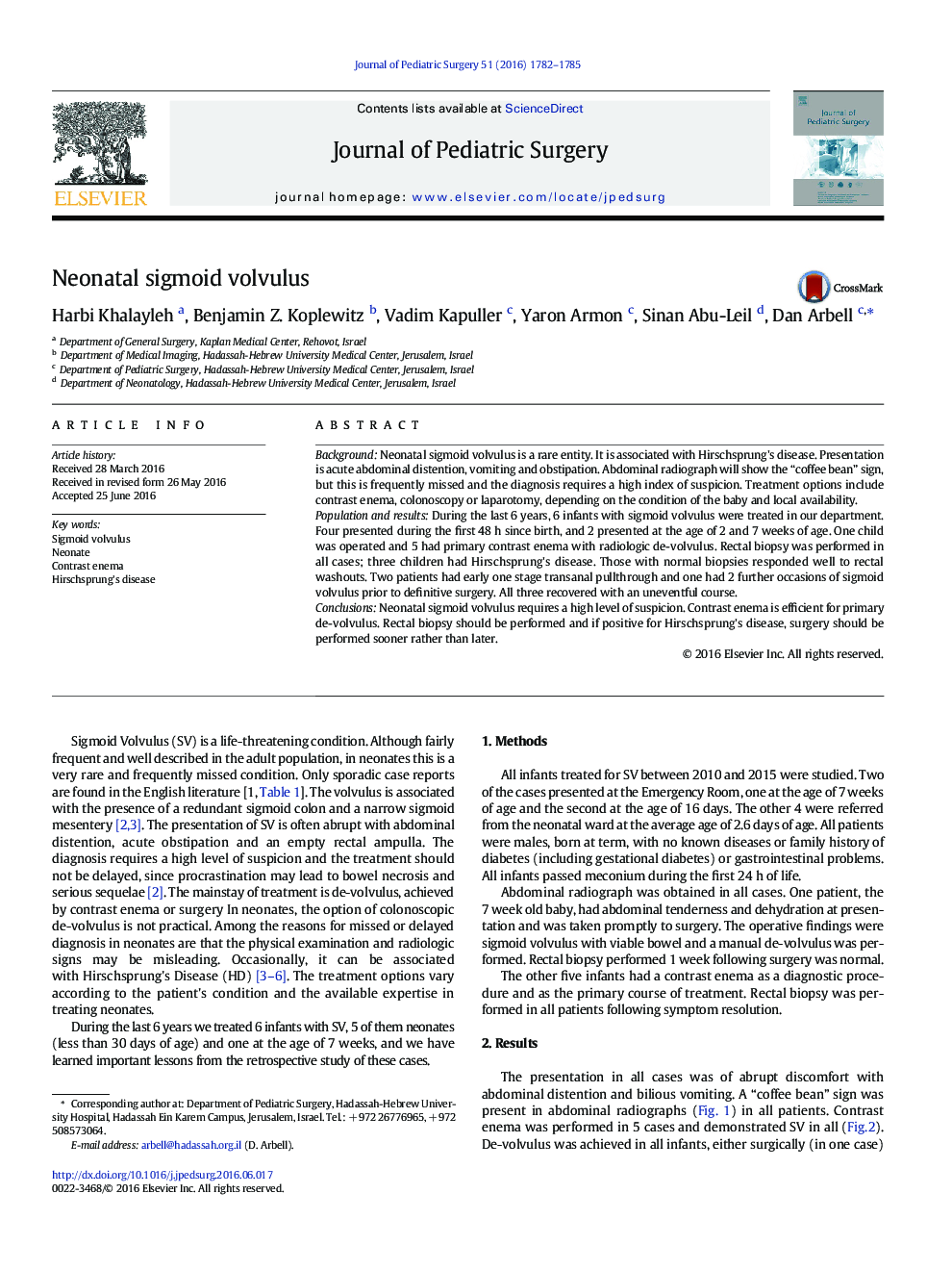| Article ID | Journal | Published Year | Pages | File Type |
|---|---|---|---|---|
| 5718368 | Journal of Pediatric Surgery | 2016 | 4 Pages |
BackgroundNeonatal sigmoid volvulus is a rare entity. It is associated with Hirschsprung's disease. Presentation is acute abdominal distention, vomiting and obstipation. Abdominal radiograph will show the “coffee bean” sign, but this is frequently missed and the diagnosis requires a high index of suspicion. Treatment options include contrast enema, colonoscopy or laparotomy, depending on the condition of the baby and local availability.Population and resultsDuring the last 6Â years, 6 infants with sigmoid volvulus were treated in our department. Four presented during the first 48Â h since birth, and 2 presented at the age of 2 and 7Â weeks of age. One child was operated and 5 had primary contrast enema with radiologic de-volvulus. Rectal biopsy was performed in all cases; three children had Hirschsprung's disease. Those with normal biopsies responded well to rectal washouts. Two patients had early one stage transanal pullthrough and one had 2 further occasions of sigmoid volvulus prior to definitive surgery. All three recovered with an uneventful course.ConclusionsNeonatal sigmoid volvulus requires a high level of suspicion. Contrast enema is efficient for primary de-volvulus. Rectal biopsy should be performed and if positive for Hirschsprung's disease, surgery should be performed sooner rather than later.
